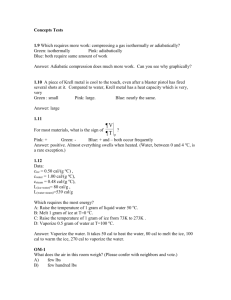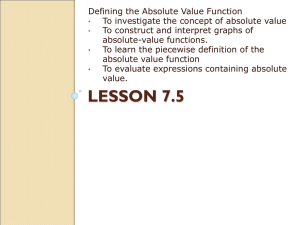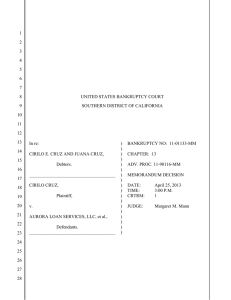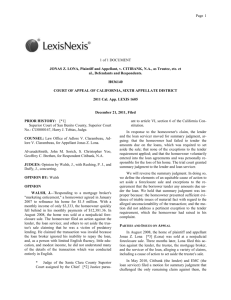An obituary - Hilden Charitable Fund
advertisement
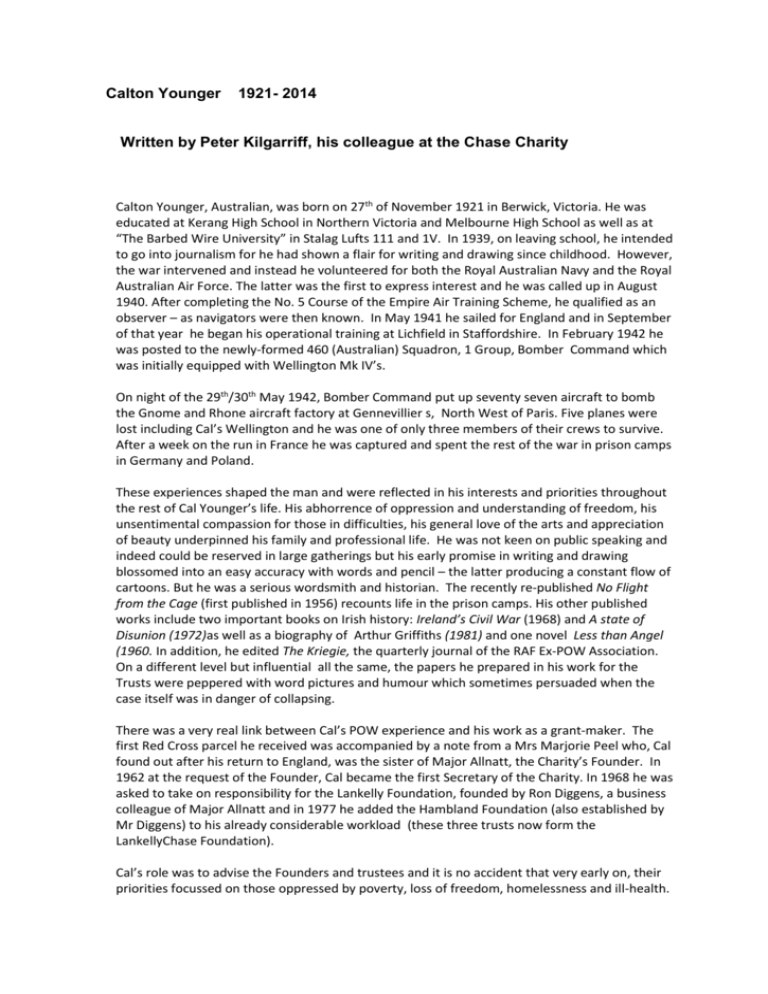
Calton Younger 1921- 2014 Written by Peter Kilgarriff, his colleague at the Chase Charity Calton Younger, Australian, was born on 27th of November 1921 in Berwick, Victoria. He was educated at Kerang High School in Northern Victoria and Melbourne High School as well as at “The Barbed Wire University” in Stalag Lufts 111 and 1V. In 1939, on leaving school, he intended to go into journalism for he had shown a flair for writing and drawing since childhood. However, the war intervened and instead he volunteered for both the Royal Australian Navy and the Royal Australian Air Force. The latter was the first to express interest and he was called up in August 1940. After completing the No. 5 Course of the Empire Air Training Scheme, he qualified as an observer – as navigators were then known. In May 1941 he sailed for England and in September of that year he began his operational training at Lichfield in Staffordshire. In February 1942 he was posted to the newly-formed 460 (Australian) Squadron, 1 Group, Bomber Command which was initially equipped with Wellington Mk IV’s. On night of the 29th/30th May 1942, Bomber Command put up seventy seven aircraft to bomb the Gnome and Rhone aircraft factory at Gennevillier s, North West of Paris. Five planes were lost including Cal’s Wellington and he was one of only three members of their crews to survive. After a week on the run in France he was captured and spent the rest of the war in prison camps in Germany and Poland. These experiences shaped the man and were reflected in his interests and priorities throughout the rest of Cal Younger’s life. His abhorrence of oppression and understanding of freedom, his unsentimental compassion for those in difficulties, his general love of the arts and appreciation of beauty underpinned his family and professional life. He was not keen on public speaking and indeed could be reserved in large gatherings but his early promise in writing and drawing blossomed into an easy accuracy with words and pencil – the latter producing a constant flow of cartoons. But he was a serious wordsmith and historian. The recently re-published No Flight from the Cage (first published in 1956) recounts life in the prison camps. His other published works include two important books on Irish history: Ireland’s Civil War (1968) and A state of Disunion (1972)as well as a biography of Arthur Griffiths (1981) and one novel Less than Angel (1960. In addition, he edited The Kriegie, the quarterly journal of the RAF Ex-POW Association. On a different level but influential all the same, the papers he prepared in his work for the Trusts were peppered with word pictures and humour which sometimes persuaded when the case itself was in danger of collapsing. There was a very real link between Cal’s POW experience and his work as a grant-maker. The first Red Cross parcel he received was accompanied by a note from a Mrs Marjorie Peel who, Cal found out after his return to England, was the sister of Major Allnatt, the Charity’s Founder. In 1962 at the request of the Founder, Cal became the first Secretary of the Charity. In 1968 he was asked to take on responsibility for the Lankelly Foundation, founded by Ron Diggens, a business colleague of Major Allnatt and in 1977 he added the Hambland Foundation (also established by Mr Diggens) to his already considerable workload (these three trusts now form the LankellyChase Foundation). Cal’s role was to advise the Founders and trustees and it is no accident that very early on, their priorities focussed on those oppressed by poverty, loss of freedom, homelessness and ill-health. But the importance of the arts and the need to encourage young artists were also central themes. Throughout his 27 years with the Trusts, Cal’s understanding of how charities develop, the skills required and the part charitable grants might play was informed by his generous personal involvement. For many years he was a trustee of Norman House, the innovative halfway founded by Merfyn Turner in 1954 to provide a fresh start for ex-prisoners who wanted to change their lives. He was a trustee of the Association in Deaf Education and an early trustee of two RAF Ex-POW Association charities and remained so till his death. Likewise with the first initiative of the Chase Charity, the Kirckman Concert Society, which provides platform experience to young professional musicians. He was also a founding trustee of the Swan Mountain Trust , a grant-making trust working in the fields of mental health and criminal justice. Cal recognised that the charitable trust world was generally stuffy and difficult for small charities to connect with and he encouraged openness and partnership between Trusts. For many years, long before the formation of the Association of Charitable Foundations (ACF) he edited Trust News, then a rather radical publication which helped trusts understand what each other did and encouraged collaboration. It also carried his cartoons featuring Jim Trustman, a non-existent trust secretary whose escapades and characteristics poked gentle but serious fun at the selfimportance of the profession. When a professional association was mooted, Cal strongly supported the idea and his tact and wisdom helped greatly in what was a very sensitive exercise. His list of trusteeships, and it is not exhaustive, is evidence of Cal’s energy and doggedness. Cal retired as Secretary to the Trusts in 1989 but that didn’t affect his workload very much even after he and Dee moved from their home in Ealing to Great Bedwyn in Wiltshire. He accepted an invitation to become a trustee of the Hilden Charitable Fund and, on the death of Angus Allnatt, the son of Chase’s Founder, he helped establish the charitable trust which bears his name. For almost 25 years after he retired, Cal travelled up and down to London to various trustee meetings on a regular basis. He was physically strong and his spirit seemed indomitable. He continued working till the end , always with great thought and quality. In the latter years, he was much called on to talk about his wartime experiences and the role of Bomber Command. He regularly attended the Armistice Day Parade and he was greatly pleased that the fifty-five thousand men who lost their lives in Bomber Command had at last been officially recognised with a new memorial. He took full part in those celebrations. Just last summer he spent almost every weekend as the guest of one RAF Squadron or another and he was delighted to be invited to climb into the restored Wellington at Brooklands Museum, which had been recovered from Loch Ness in 1985. It is entirely typical that he insisted on doing this, despite his age and infirmity. His final unfinished work was a collaboration with two other authors to commemorate the Great Escape. He had been commissioned to write an introduction and an epilogue to a book containing brief biographies of the fifty men who escaped from Stalag Luft III in 1944 as well as biographies for the seven Australians involved. There is something very fitting that Cal should die between the passing of one year and the beginning of the next. His is a rare legacy, full of truths which remind us of what has been and examples of how we ourselves might approach the future. Peter Kilgarriff Calton is survived by his Son Michael and his daughter Amanda and their children and grandchildren.







